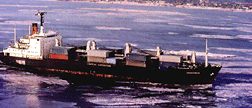Unseaworthy Vessels
Every worker, no matter where their job takes them, deserves a safe environment to make their wages in. This is doubly true in the case of maritime work, where the job hazards are numerous and the risk for injury or illness as a result of unsafe workplaces is high.
American maritime law provides a special doctrine for unseaworthy vessels that is a separate and distinct theory of liability outside of the Jones Act, the defining body of maritime law in America. While the phrase “unseaworthy” may call to mind some kind of derelict ghost ship, the truth is far more nuanced and complicated. Unseaworthiness means that any given aspect of a vessel, her equipment, or even her crew is not reasonably fit for its intended purposes. In the eyes of the law, any unsafe condition aboard a vessel can contribute to unseaworthiness; the vessel does not have to sink or be inoperable for the law to consider it unseaworthy.If you’ve been injured by the unsafe or unseaworthy conditions of a vessel you’ve been employed on, O’Bryan Law can help. Our team of compassionate, knowledgeable attorneys has the understanding of the Jones Act necessary to protect your rights and help you financially recover from any injury or accident due to the unseaworthiness of a vessel you’re employed on. Contact O’Bryan Law today to begin a review of your case.
Unseaworthy Vessel & Unseaworthiness FAQs

What is an unseaworthy vessel?
An unseaworthy vessel, as defined by the Jones Act, refers to any vessel that is currently unfit for its intended purpose. Over the years, the law has found the definition of unseaworthiness to encompass far more than just how functional the vessel itself is – an unseaworthy vessel may have a fully functioning motor but lack proper safety equipment for the crew, or a defective navigation system, or even something as simple as inadequate lighting in high-traffic areas.
A vessel being found to be unseaworthy may arise from the vessel having insufficient manpower for a task, defective equipment, damage to the vessel itself, or any unsafe condition onboard that poses an unreasonable threat to the safety of the crew. Unseaworthy vessels, to put it simply, are any vessel that does not allow for the crew to perform their duties safely for whatever reason.
What constitutes a vessel under the Jones Act?
The definition of a ‘vessel’ under maritime law can be just as broad as the definition of ‘unseaworthiness’, and can affect a number of different maritime workers and workplaces.
Courts have determined that ‘vessel’ can refer to any number of maritime vehicles and installations, ranging from cargo ships and fishing vessels to charter boats, cruise ships, barges (even without sleeping quarters), or even moored boats like casino ships. In many cases, even offshore oil rigs can be considered ‘vessels’ despite their stationary nature. The terms of the Jones Act are sweeping enough that any injury due to unseaworthiness can impact a wide degree of maritime workers, no matter what vessels they work on.
How do I know if I am working on an unseaworthy vessel?
A vessel can only be declared unseaworthy if the condition of the vessel directly leads to an injury or accident, but while working on a vessel, there are several tell-tale safety issues to look out for, including (but not limited to):
- Lack of proper safety equipment, including life preservers, safety goggles, and the like
- Lack of first-aid equipment in the event of an injury
- Lack of adequate bathroom facilities
- Misrepaired or unrepaired equipment
- Lack of necessary equipment to perform daily crew duties
Any combination of these factors can lead to a vessel being considered unseaworthy, particularly if it leads to the injury or death of a crewmember.












